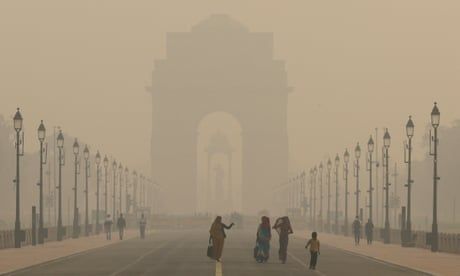
Leaders of Indian capital must tackle transport and heavy industry rather than seek quick fixes, say campaigners
As winter sets in across north India – usually around the time of the country’s biggest festival, Diwali – the air in Delhi becomes thick and brown with visible pollutants. To breathe in is to taste toxic fumes. The visibility is often so bad that famous monuments are reduced to smoky blurs on the horizon. It is, as one writer once put it, as if a burial shroud has cloaked the city.
For a decade, Delhi has regularly held the dishonourable title of being the world’s most polluted city, with other Indian cities close behind. A recent study calculated that the 30 million people living in and around the capital could have almost 12 years taken off their lives due to its catastrophic health impacts.
Continue reading...